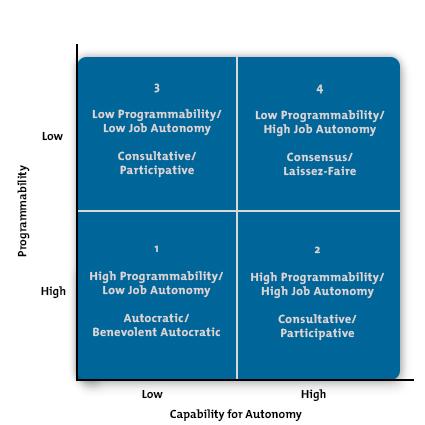Leadership Style Matrix
Choosing the Best Leadership Approach

© iStockphoto
sweetym
When you're new to managing people, it can be hard to choose which path to take.
When you start to manage new people, how do you know which leadership style you should use?
There are a number of things that determine this. For example, does the work have scope for creativity, or does it need to be completed in a specific way? Would close management be best, or should you encourage your people to work independently and deliver a finished product?
Different people and different types of projects need different leadership styles. But how do you know which approach is best for each project, person, or situation?
In this article, we'll look at the Leadership Style Matrix, a model that helps you decide.
Overview
Eric Flamholtz and Yvonne Randle developed the Leadership Style Matrix and published it in their 2007 book, "Growing Pains." The matrix, shown in figure 1, helps you choose the most appropriate leadership style, based on the type of task you're involved with and the people you're leading.
Figure 1 – The Leadership Style Matrix

From "Growing Pains: Transitioning From an Entrepreneurship to a Professionally Managed Firm" by Eric G. Flamholtz and and Yvonne Randle. Fourth Edition. © 2007. Reproduced with permission of John Wiley and Sons, Inc.
The Leadership Style Matrix is divided into four quadrants. Each quadrant lists two leadership styles that are best suited for a specific situation and person (or group).
The Y-axis defines the "programmability" of the task. A programmable task has specific steps or instructions to complete. A non-programmable task is more creative; it's up to the individual to decide how best to accomplish it.
The X-axis describes the individual's capability and preference for autonomy. Several factors influence this, including education, skill, motivation, and their desire for feedback, interaction, or independence.
For instance, a person with a high level of education, skill, motivation and independence is likely to want autonomy. Someone with low motivation and skill will need – and may want – more feedback and interaction, so that he or she can complete the task successfully.
Using the Model
To use the model, first look at...
Access the Full Article
This article is only available in full within the Mind Tools Club.
Learn More and Join TodayAlready a Club member? Log in to finish this article.


